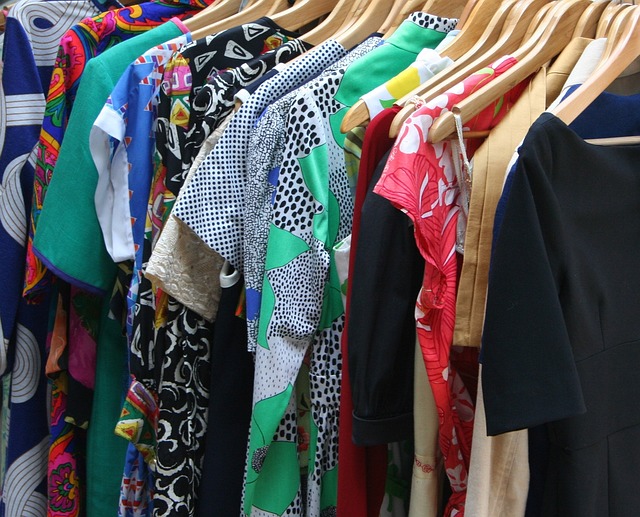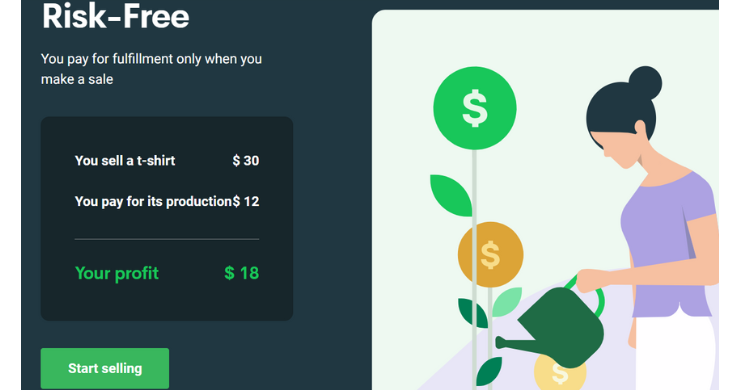
The concept of initiating a Print on Demand (POD) venture may appear quite appealing due to various reasons. These include the elimination of inventory management, minimal initial expenses, and swift delivery services. What could possibly be unappealing about it?
Although it may be enticing to view it in a glamorous light, it is crucial to acknowledge that POD is an authentic enterprise. Failing to approach it as such significantly reduces your likelihood of achieving success in POD, as you are likely to encounter numerous errors throughout the process.
Before beginning the process of attracting customers to your store, it is necessary to follow a series of steps to ensure that your POD business is accurately established and prepared for selling.
In this article, the necessary steps to be taken before starting a POD store are explained. By following these steps, you will not only be adequately prepared to begin selling but also circumvent the typical errors made by novices when commencing a POD business.
1. Only add a maximum of 5 color variants to your product
When you provide customers with different options such as various colors or sizes for your product, it effectively motivates them to spend more money and enhances your profit margin per order. However, there is a threshold where offering customers excessive choices can overwhelm them.
Having too many choices is always a bad idea since it leads to analysis paralysis, which is the inability to make a decision or take action due to an overwhelming number of options or excessive information.
Many of us have encountered this situation in the past, whether it is struggling to select a meal from a restaurant menu or deciding on a movie to watch at the theater. Similarly, an abundance of colors or designs to choose from can make customers feel overwhelmed. This feeling of being overwhelmed may even cause them to exit your website without making a purchase.
To avoid excessive color options, it is recommended to choose a maximum of five variants for every product in your inventory.
Merch by Amazon discovered that not all designs are visually appealing on every color, particularly when it comes to t-shirts. Extensive research and testing revealed that darker shades, such as grey or black, tend to achieve higher sales in comparison to lighter shades.
2. Check your print provider options before selling internationally
One common misunderstanding among individuals who utilize POD fulfilment services such as Printful or Printify is that these services handle the production and fulfilment of orders when a product is purchased.
The statement made is inaccurate. Typically, these POD fulfilment services collaborate with multiple third-party suppliers.
These are the suppliers who fulfill your orders. All suppliers are located in different countries and have varying prices, color options, and production durations. Typically, Print on Demand fulfillment services allocate your orders to the supplier nearest to your customer’s physical location.
When it comes to certain Print on Demand fulfilment services, like Printify, the selection of a supplier to fulfil your customers’ orders is not done automatically but has to be done manually. In such cases, it is of utmost importance that you carefully choose a third-party supplier that is most suitable for fulfilling your orders.
If your customer lives in Germany, it is advisable not to choose a supplier based in the US. Additionally, it is preferable not to select a supplier with the longest production time, as the objective is to deliver orders to customers as quickly as possible.
3. Make sure that you have a credit card or money set aside
When beginning a POD business, it can be confusing to determine how to manage the funds received from customers who place an order for a product from your store. Questions may arise regarding the individuals who place the orders and the methods by which you collect payment for these orders.
If you analyze it step by step, the procedure is quite simple. Here is an instance of how using Printify as your main Print on Demand fulfillment service functions.
- When a customer places an order for a pillow in your store, you receive money via Stripe or PayPal (two of Shopify’s payment gateways).
- Then, Printify will, by default, scan your store once a day for any customer orders that need to be fulfilled.
- When Printify finds the customer’s order, they will automatically start the fulfilment process for the pillow.
- At the same time, Printify will charge the credit or debit card you have on file in your Printify account.
This is the general process for fulfilling each order made in your store. However, when you are just starting, it may take several days for the money you receive from a customer to reach your bank account. In fact, if you are a beginner, it could take up to 21 days to receive your money through PayPal. The duration of this time period also depends on the country of residence.
To ensure your ability to make purchases in the meantime, it is crucial to have either a credit card or money saved. Credit cards are typically the preferable choice, as they allow a grace period of 4-5 weeks to settle the balance before interest accrues. Rest assured, you will receive your payment well in advance of this timeframe.
4. Make sure the product suits the design
Just because a design appears appealing on one item does not guarantee its appeal on any other product. The first priority is to ensure coherence. We have witnessed various odd combinations, ranging from women’s tank tops featuring “#1 Granddad” designs to mugs adorned with “This is my party shirt” designs.
If the design appears visually appealing and coherent with the product, it is advisable to consider the printing method and fabric as well. Certain fabrics are best suited for specific print methods, while others offer a textured sensation. Additionally, there are “special effects” available, such as glitter and glow-in-the-dark options.
Here are a few brief points for you to contemplate when selecting your combination of product and print technique:
When printing digitally onto sweatshirts, the ink may appear less vibrant compared to T-shirts made of cotton because the ink tends to fade slightly on softer products like polyester blends.
The DTG on rougher products like the Polo Shirt may show slight fading because of the product’s texture. In contrast, the flex print technique (DTF) will produce a clearer design and sharper contrast.
By adding flock (velvet) on caps, the logo achieves greater depth and texture.
Using transparencies with a logo (opacities less than 100%) may not yield optimal results when applied to colored products due to the necessity of printing a white layer first. However, gradients with transparencies can be utilized on white products.
The fabric limitations of DTF are not as restricted as DTG, resulting in more uniform outcomes across various products.
To ensure that you will be satisfied with the print results, it is advisable to order a sample first before displaying it in your store. This will allow you to confirm your familiarity with the appearance and texture of the product.
5. Take copyright and trademark seriously
Stealing is not allowed! Just because you discovered it on Google does not make it yours. It is always best to create something unique. If you are not skilled at designing your own creations, SPOD provides a free library with over 50,000 designs that you are welcome to utilize.
Trademark protection differs between countries, meaning that just because something has copyright in the US, it may not be protected in France. Consequently, if a trademark is in the public domain in the country where your products are being sold, you are allowed to use it.
If you come across a text-based design that is not copyrighted, you have the freedom to redesign it in your own unique style. For instance, imagine you come across a captivating design featuring a quote by Albert Einstein. In this scenario, you can utilize the same quote and creatively illustrate it in a distinct manner, all while adhering to the guidelines.
6. Source designs carefully and get them right the first time
If you want to save time, one option to consider is purchasing designs online. However, you should be cautious of the cheapest choices as they may not be of high quality or original. When preparing your images for printing, you will have to examine the colors, make adjustments to transparency, and ensure the resolution is satisfactory, among other things. Investing time in perfecting your designs from the beginning will prevent future difficulties and save you money.
7. Add scarcity
By selecting a specific target market, you can entice your customers by creating a sense of scarcity. Labeling a product as “limited edition” or offering it for a limited time can motivate your customers to make a purchase.
8. Get honest feedback from your friend or family member
Due to illusory superiority, the regular inclination for individuals to overvalue their skills, it becomes quite challenging to take a step back and objectively assess the things we produce.
Relying solely on your own opinion is not advisable because you have a natural tendency to perceive things from a biased standpoint. To gain diverse viewpoints on the appearance of your store or product designs, it is recommended to seek the opinions of others.
If you know someone who doesn’t like to beat around the bush, ask them to give their honest opinion on the appearance of your store or the product you are selling.





